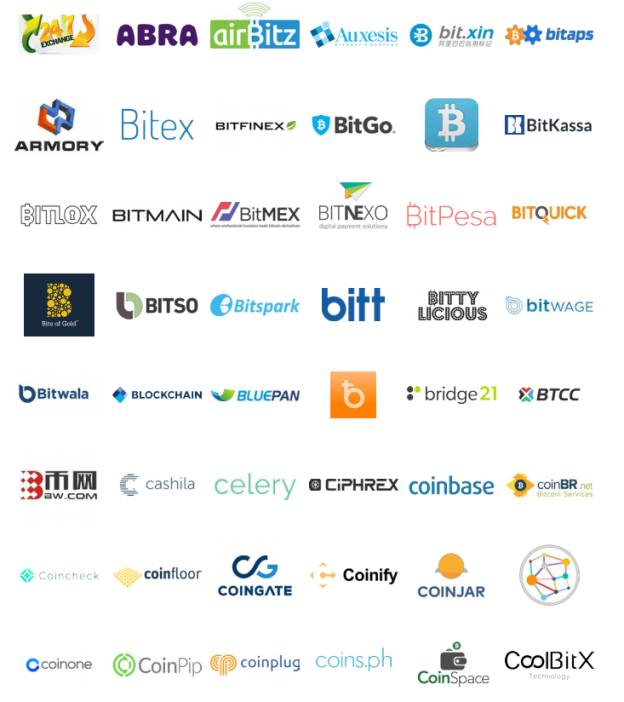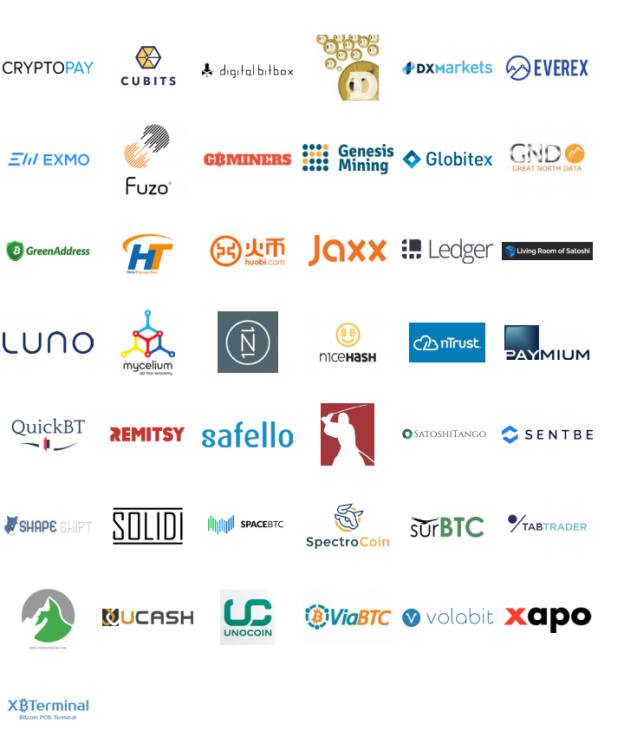Bitcoin, the poster-child of cryptocurrency, rose to $19,343 (£13,807) on 16 December 2017. But in percentage terms, relative newcomer Ripple was the best-performing currency of 2017, rising from $0.25 (£0.17) on 11 December, to $3.40 (£2.40) on 7 January, before collapsing to $0.65 (£0.46) by 6 February.
There are now 1,384 currencies as at the time of writing (perhaps even more by the time this is published). Some of the most-traded ones and the support services infrastructure supporting them can be seen in the infographics below.
(Source for the infographics is the Global Cryptocurrency Benchmarking Study, Cambridge Judge Business School).
Anyone can launch a cryptocurrency and create it at any time, for any purpose. For example, one coin gaining currency (if you pardon the pun) in Australia and beyond is Dentacoin.
Clinics such as the Dental on Flinders, in Melbourne, joined the Dentacoin network to assist people to pay for treatments that will help prevent tooth loss and decay.
Dr Max Ganhewa, dentist at the practice, comments: "Dentacoin could help shift the paradigm from 'drill and fill' dentistry to a prevention-focused approach. It will also help build a tightly-knit dentist-patient community." The practice now allows 50 different types of cryptocurrency to be accepted as payment.
Mining
Cryptocurrencies can be mined by speculators. But this isn't any old Gold Rush-style 'head for the mountains with a pickaxe and a canary, boys' style of mining.
This is a sophisticated protocol development, whereby 'miners' group unconfirmed cryptocurrency transactions into new blocks and add them to the global ledger, the blockchain.
Because they provide the necessary computing power to secure a blockchain by computing vast number of hashes to find a valid block.
The two previous sentences are full of words but what do they mean? Once again, the new lexicon developing around blockchain and bitcoin can be a barrier to understanding.
Effectively, a hash is the output of a hash function in computing. A hash function is a mathematical algorithm that can be used to map data of arbitrary size to data of fixed size.
For cryptocurrency, a hash function will map any data of any size to a bit-string of a fixed size (called a hash). It is meant to be a one-way function and cannot be reversed.
The way in which hash functions relate to cryptocurrency therefore means creating a series of fixed-size bitstrings, a hash. The quicker you create these blocks of hashes when 'mining' the better, because this increases your opportunity of finding the next block and receiving the reward you get from completing an operation in the Bitcoin code.








